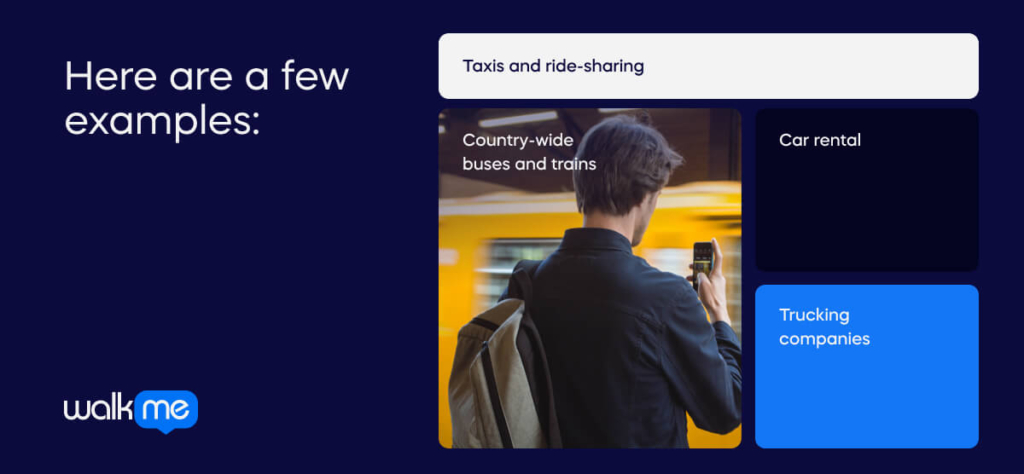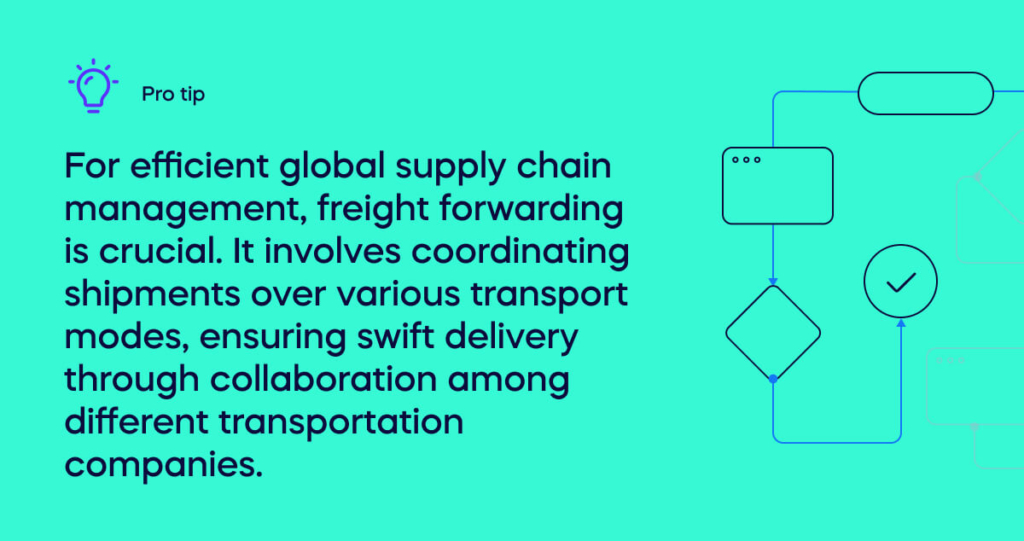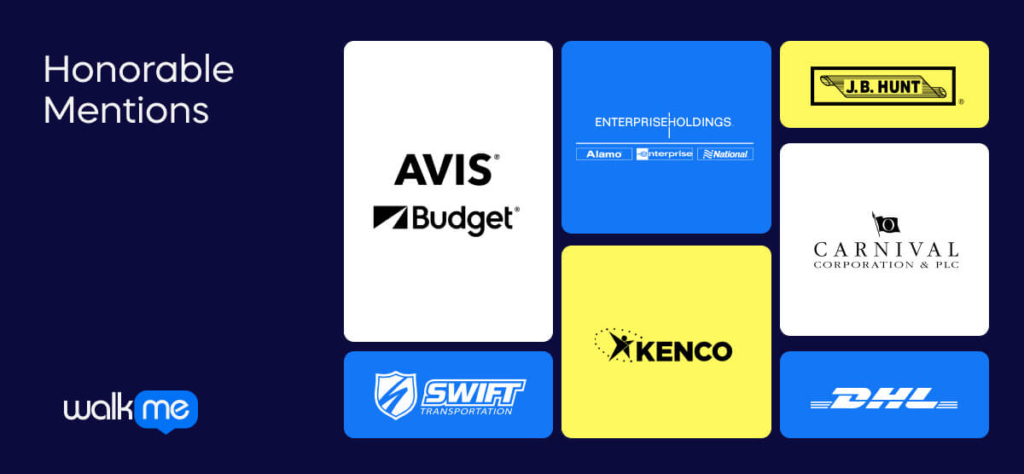The transportation industry makes the world go round. Or rather, it makes things go around the world. And yet, we take so much of what transportation companies do for granted. People can go to their local supermarket and buy pears, for example, at any time of the year.
Change management solutions ensure that the harvests and shipments arrive on time, regardless of weather conditions and other potential delays. Pears can’t be grown in the same locations year-round. It’s only through precise planning by transportation companies that the supply of pears remains consistent.
Supply chain management solutions are so efficient that it’s cheaper to grow pears on the other side of the world and import them than grow them locally. The change management digital transformation of the transportation industry is already underway, with companies like Uber and Lyft leading the way. They’re using machine learning algorithms to match passengers with drivers in real time for better efficiency. Meanwhile, delivery companies are leveraging drones to deliver packages quickly and efficiently.
The transportation industry is truly a marvel of ingenuity and innovation.
In this article, we’re going to explore transportation companies in more depth and look at some of the biggest players in the game.
We’re also going to consider what the future of transportation looks like— and how one of the biggest industries’ communication channels might look in the digital age.
What Does The Transportation Sector Do?
In general, if it involves moving people or goods from one place to another, it’s a part of the transportation sector.
Beyond that, companies in the transportation field provide a wide variety of services. Public transport companies provide convenient and swift transportation to the masses. Air freight, truck drivers, and boat companies provide global transport of goods for low prices.
Private companies provide high-quality services, too— at much higher costs, such as cruise ships and rental companies. You could even consider a cab company private and high-cost, but efficient.
Transportation In The Digital Age
The population and demand are growing, but physical space in cities and urban areas… isn’t growing.
This is the biggest challenge for national and international organizations in the transportation industry.
The rate at which we can expand transport infrastructure will decline while the demand only continues to rise.
That’s where digital transformation comes in. Transportation companies will need to leverage technology to keep abreast of changes.
Trains and buses will be able to measure demand automatically and adjust dynamically. Increasing or decreasing service availability as required.
Tickets will be entirely digitized, and pricing will be personalized and dynamic. You’ll pay for exactly what you need and no more.
As automation technology improves, such as self-driving cars, safety and efficiency will rise. This will disrupt the insurance industry and better protect travelers.
The possibilities are limited only by the speed at which we can innovate.
What Transportation Services Do Companies In The Field Offer?
Land Transportation
Transportation overland is the most convenient transportation method. The availability of roads only limits it. It’s the primary mode of transport for most smaller-scale operations.
The downside is that it’s usually slower and less efficient. For this reason, land transportation is traditionally used for smaller-scale transport operations.
Here are a few examples:

- Car rental.
- Taxis and ride-sharing.
- Trucking companies.
- Country-wide buses and trains.
The further the distance, the less suitable land transportation solutions become.
Water Transportation
Shipping is the backbone of the global supply network. Over long distances, shipping services are more efficient than trucking companies.
Since roads do not limit them, shipping services have higher capacity and follow more efficient routes across the seas.
The downside is shipping services are slow and can only transport goods as far as a port.
Because of the slowness of water transportation, it’s much less common for people to travel by water.
Air Transportation
To date, aviation services are the fastest way to transport cargo around the globe. It’s also the most expensive and least efficient.
It provides the advantage of delivering goods further inland than sea travel allows, making aviation services a better solution.
That said, air transportation is more commonly used to move people.
Humans value their time, and a trip that takes weeks over land or sea can take less than a day via air. That’s usually worth the additional cost for people.
Space Transportation

Space is the next frontier for transportation. It is possible to transport goods through space— that’s how governments keep space stations supplied.
That said, it’s outrageously inefficient and has no advantages over air transportation.
In the future, people and goods will likely be transported through space, but only to reach destinations that aren’t on Earth.
Only astronauts are transported this way, but if tech companies progress their plans to launch data centers into space, we might soon see a role for the transportation industry to get engineers into orbit and back regularly.
Furthermore, we might see low-earth orbit, the moon, or mars become tourist destinations.
Space travel might become a feasible solution for transport from one place on Earth to another, but there’s no suggestion of that happening any time soon.
How Do These Services Link Together?
One idea that underpins all global supply chain management is freight forwarding.
Freight forwarding is the coordination and shipment of goods over several different types of transport. It’s critical for companies in the transportation field to collaborate to ensure swift transportation.
For example, a fishing company in Greece uses small fishing boats to catch fish.
A Mediterranean shipping company then delivers the goods to the various archipelagos of Greece.
At the docks, the Mediterranean shipping company hands the goods to a truckload carrier who delivers them to a warehouse.
A warehouse operations team then organizes for the goods to be delivered to shops, where they’re finally available for consumers to purchase.
It’s common for third-party logistics companies to manage supply chain solutions without getting their hands dirty. Logistics companies can operate out of major cities, and a corporate team could organize the entire process remotely.
This division of labor lets companies specialize and improve shipping performance.
What Are The Best Transportation Companies In The Field?

The transportation sector is eclectic. There are public transportation companies, freight management, equipment, warehousing services, etc.
So rather than list hundreds of companies, we’re going to look more closely at some of the best transportation companies in the world.
If you’re seeking employment in the transportation industry, these are some of the best companies to work for. The transportation industry accommodates people from all walks of life, and there are suitable roles for various skill sets, whether you want to be a mariner or on a tech team.
- UPS
In 2021 UPS overtook rival FedEx as the biggest transportation company in the world.
United Parcel Service (UPS) is one of America’s global logistics companies. It supports both B2C and B2B shipping.
UPS recorded annual revenue of $97.2 billion in 2021, which is a 15% increase over 2020.
Annual profits for UPS in 2021 came out at $12.8 billion, an eye-watering 66% increase over profits the previous year.
The biggest contributing factor to UPS’s success in recent years lies in its biggest client: Amazon.
- Uber
Uber Technologies, Inc. owes its success to a diverse portfolio of transportation-related services. Still, it kick-started its success through its innovative approach to ride-hailing, which effectively allowed anybody to work as an independent cab driver.
Although it’s unknown to many, Uber has a thumb in the freight transportation pie alongside UPS.
Uber also provides ride-hailing, food delivery, courier, and Mobility as a Service (MaaS) services.
Uber thrives because it caters to a wide variety of audiences. This is evident in its ride-hailing service alone, where customers can choose between the standard UberX, UberXL, Uber Comfort, and Uber Black— each service offering unique luxuries.
- Delta
Delta Air Lines, Inc. is one of the major US airlines— and one of the oldest airlines in the world. It’s one of the biggest companies in the air transport industry.
Delta started as a crop-dusting service in Macon, Georgia, nearly a century ago. Now it flies hundreds of millions of passengers to over 300 destinations around the globe.
It wasn’t always smooth sailing (or, relatively, flying) for Delta. The airline filed for bankruptcy in 2005. But Delta bounced back in 2007 and was up and up for a decade.
The Covid-19 pandemic ceased passenger airline operations around the globe, and Delta took a hit. Its share price hasn’t recovered to its pre-Covid heights yet, but it is on the rise again.
- Deutsche Bahn
Deutsche Bahn (DB) is a relatively new contender in transportation, having only been founded in Germany in 1994.
Despite that, it’s the most extensive rail company in Europe and, by extension, the entire world, as rail is one of Europe’s primary modes of public transport.
DB transports 2 billion people and 300 billion tons of goods annually, and they boasted revenue of $47.72 billion in 2021.
Environmental factors work in favor of DB over other companies in the transportation field. For example, a Mckinsey report states that over the next ten years, car transport over short-medium distances is expected to decrease by 20-70%, which frees up modal share that could be captured by rail.
Honorable Mentions

There isn’t room in this article to talk about all of the notable businesses in the transportation field, but here are a few honorable mentions for some of the best transportation companies when it comes to customer satisfaction:
- Swift Transportation— the largest full truckload carrier in the U.S. Often praised because the company prioritizes employee growth.
- Avis Budget Group— the parent company of several car rental companies in the U.S., including Zipcar and Budget Rent.
- Enterprise Holdings— another major player in the car rental space.
- Kenco Logistics Services LLC— a top-ranked logistics company that offers a range of business services, including innovation consulting, material handling, and comprehensive transportation management solutions.
- J.B. Hunt Transport Services is one of North America’s largest logistics companies.
- DHL North America— one of America’s prominent shipping and boat companies.
- Carnival Corporation— owner of Carnival Cruise Line, a major cruise line transportation company.
Transportation and Logistics Post-Covid Have Become Complex
There are several ways the pandemic could continue to affect logistics solutions long into the future. Here are a few of the considerations business leaders in the transportation field have to make:
Consumer Psychology During Recession
The US is in a recession, with two consecutive quarters of negative Gross Domestic Product (GDP) in 2022.
When this happens, consumers try to spend less and save more. Transportation companies must take this into account.
For example, it’s less likely that consumers will be looking to buy new cars during a recession, with many preferring used vehicles or looking to downsize.
Social Distancing Becomes a Cultural Normality
Work-from-home (WFH) setups aren’t a necessity for most businesses anymore, yet some only aim to have 10-30% of critical employees return to the office permanently.
This has enormous ramifications for the transportation industry, facilitating countless daily commutes pre-pandemic.
But it’s not just decreased demand which matters. Those who continue to use transport services might lean away from shared mobility like public transport, seeking to avoid crowds. If that’s the case, you can fit fewer people in a train car.
Every public transportation company must be prepared for a physical-distancing mandate which could reduce their capacity for passengers by 90% at very short notice.
Long-Range Travel Is Less Popular
Another McKinsey report states that worldwide airline travel was down by 70-80% in April 2020 compared to the year before. And there are suggestions that this isn’t just an immediate reaction to the pandemic but the beginning of the new normal.
Mckinsey suggests that 43% of consumers will permanently decrease airline travel, 27% will reduce rail travel, and 22% expect to use private vehicles more frequently.
New Operational Challenges
Unlike knowledge industries, companies in the transportation field can’t work entirely remotely. They need employees out in the field, and additional safety measures are required in a post-pandemic environment.
As governments scramble with employers to outline the limits of these safety measures, it’s getting harder for transportation companies to collaborate internationally.
Digital Transportation Infrastructure and The IoT Is Transforming The Sector

In the transportation field, one of the most effective ways to combat unpredictability in a post-Covid world is by leveraging digital infrastructure. Businesses have seen how fast the world can change, and they see how fast they need to be able to change with it to keep up.
Using the Internet of Things (IoT) is the key to agility in the transportation field.
Here are a few of the potential applications of IoT in improving logistics solutions:
- Real-Time Vehicle Tracking
With real-time GPS data being processed on the fly, logistics fleets will benefit from increased efficiency, better customer service, and lower costs. But the biggest benefit will be the ability to proactively deal with real-world problems like traffic and availability.
For example, an automated dispatch system could manage an entire fleet of interconnected trucks for maximum efficiency.
In public transport, passengers could see live information about the location of buses, potential delays, and alternative routes.
- Improved Diagnostics
Digital diagnostics information can identify problems with expensive equipment like cars, trucks, and planes before they even become problems—things like excessive braking or aggressive acceleration.
In industries that need to be hyper-efficient and work to strict deadlines, unexpected issues can be detrimental.
An IoT diagnostics system could provide more in-depth early diagnostics and feed into another method that can automatically organize required maintenance.
- Safety Compliance Enforcement
The machine looks out for man when technology is used this way. An IoT-connected system of long-haul trucks could calculate the best rest stop location for drivers based on real-time traffic and location data.
Trains could suggest alternate routes for passengers to alleviate congestion on busier services, helping people maintain social distancing preferences.
Is It Time For Transportation Companies to Hand Over the Reigns?
The transportation industry is a marvel of human ingenuity and collaboration. Still, it might just be the case that we’ve polished and refined global transportation as much as possible.
To push the industry to new heights, it might be time to hand the reigns over to the machines and embrace the benefits of digital transformation. Autonomous vehicles, delivery drones, and complex networks of connected roads will deliver more efficient transport solutions than ever before.
The potential of digital transformation is vast and exciting. Companies can use predictive analytics to optimize routes and anticipate traffic problems in advance. Autonomous vehicles can reduce the cost of long journeys by eliminating the need for drivers. Delivery drones can make it easier to access remote areas and reduce transit times.
But digital transformation is about more than just technology – it’s about ensuring that people are taken care of. Companies must ensure their employees have the skills necessary to work with new technology. It also means ensuring that people are not left behind during the transition.

